If you’ve been hankering for some good ol’ Milwaukee facts, then you’re in the right place. The largest city in the state of Wisconsin sure has an interesting past, and I’m stoked to reveal all of Milwaukee’s best kept historical secrets. Let’s see what kind of skeletons we can unearth!
Hopefully not any real skeletons, because it’s nowhere near Halloween, and that seems a little above my pay grade. However, I’m sure we’ll find some curiosities and oddities; perhaps Milwaukee will even seem a little Milwacky!
Regardless, let’s get digging into the history of Milwaukee, Wisconsin, and see what we find. Ready to discover 17 facts about the history of Milwaukee? Grab a shovel— or maybe just a cup of tea— and let’s go!
The History of Milwaukee
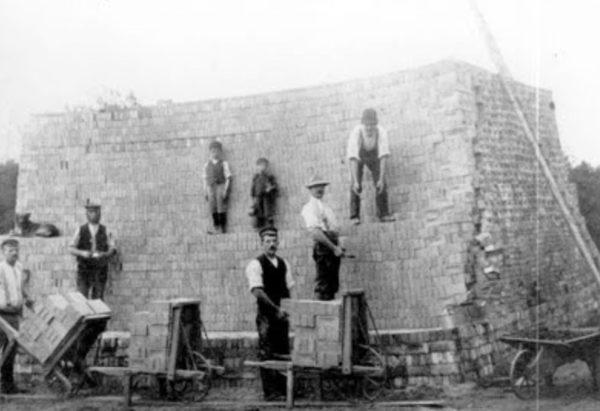
#1 – Milwacky Milwaukee
Local historians believe the name Milwaukee originates from the Potawatomi Tribe’s word for “gathering place by the water”: Mahn-ah-wauk. However, the very first written record of a word closely looking like Milwaukee was back in 1761, when a British officer wrote the name of the city as Milwacky. I’m betting the citizens of Milwaukee are glad that spelling didn’t stick! In fact, Milwaukee has been referred to as Milwack and Melleorkie too!
#2 – The Beginning of Milwaukee
While there is evidence that people inhabited the area where modern-day Milwaukee resides for 13,000 years before the first Europeans arrived in the region, the city’s modern history began in 1795 with a fur trader. Jacques Vieau, a French-Canadian, built a post in Milwaukee and is considered the founder of this city.
#3 – The Tribes
Let it not be forgotten that the original inhabitants of Milwaukee were Native Americans. From the Fox and the Potawatomi to the Sauk and the Ojibwe, these tribes lived along Lake Michigan for thousands of years. French missionaries arrived in the late 17th century, and Europeans first arrived in the 18th century. After a lot of unfortunate circumstances, battles, and deaths, the Native American tribes ceded their land in 1833 after the Black Hawk War, when they signed the Treaty of Chicago.
Need more specifics? Here are the best neighborhoods in Milwaukee to stay!
History of Milwaukee Population
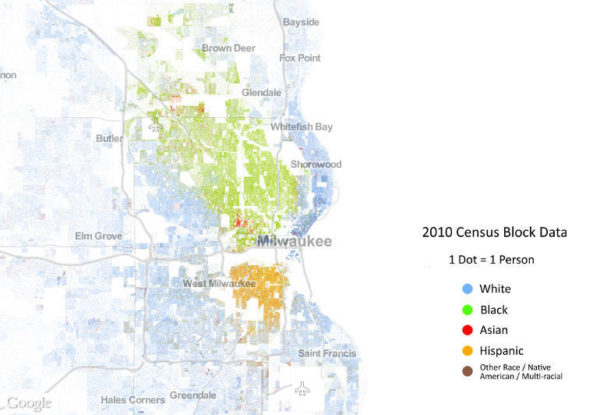
#4 – Population Boom
Between the years 1835 and 1850, Milwaukee’s population expanded from a few fur traders to more than 20,000 settlers. Talk about a population boom! Three distinct villages were constructed; however, in the year 1846, all three were incorporated into one city. At this time, Milwaukee was actually similar in size and wealth to Chicago, but in 1848, Chicago surpassed Milwaukee after securing telegraph and railroad connections. Dagnabbit!
#5 – What Goes Up Must Come Down
Milwaukee attracted quite literally a boatload of immigrants, particularly those from Germany. Milwaukee steadily, and very rapidly, increased it’s population numbers all the way until 1960 when it hit 741,000 people. However, what goes up must come down… Milwaukee faced a five-decade population decline from 1960 onwards.
The History of Milwaukee’s Industries
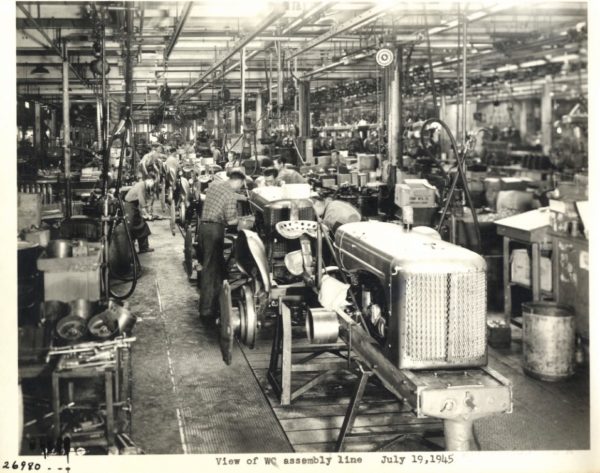
#6 – Heavy Metal Industries
As I already mentioned, Milwaukee started with fur traders. However, when the German immigrants arrived in the mid-1800s, they brought with them expert industrial skills. It wasn’t long until Milwaukee became a veritable hub of machinery, metal-working, and foundry. Up until today, these traditional industries – from constructing engines to building tools – have survived.
#7- Brew Me Up, Baby!
Milwaukee’s most known for its brewing industry, which indeed has been one of Milwaukee’s main industries since the mid-19th century. Milwaukee’s first brewery was built in 1840 by Welsh immigrants and was simply called Milwaukee Brewery. Within 20 years, nearly 35 breweries had been established in Milwaukee! During prohibition, the breweries had to resort to selling everything from soda and candy bars to snow plows!
#8 – Ok, More On Beer
Milwaukee is home to some of the biggest breweries in the United States, including Pabst, Miller, Schlitz, and Blatz. Pabst is the oldest and was first founded in 1844! However, Pabst was originally called “The Best Brewery.” In fact, to acquire their first brew kettle, they had to sweet-talk a local iron maker to make one in exchange for free beer for life! Well, what would you do in exchange for free beer for life? I’d definitely figure out how to make a brew kettle!
The History of Milwaukee’s Inventions
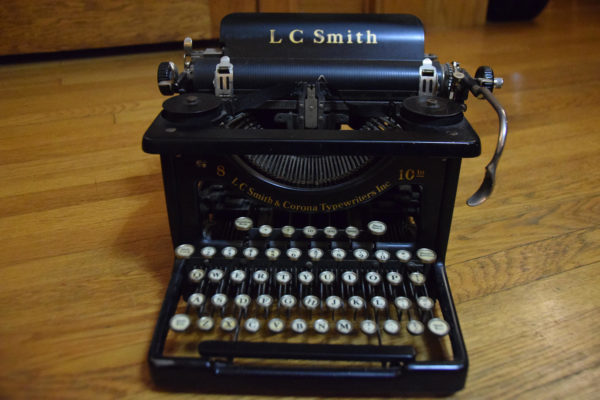
#9 – When Things Look QWERTY
If you’re reading this from a laptop or computer, chances are you have a keyboard under your fingers. You have a Milwaukee resident to thank for that. Christopher Latham Sholes moved to Milwaukee for a writing job and ended up inventing the QWERTY typewriter, which of course, later inspired these fancy keyboards underneath our fingertips! Also, it was originally so massive that even the inventor admitted it was “a cross between a piano and a kitchen table.” Well, I wouldn’t want to write an email on a piano-kitchen-table hybrid, that’s for sure!
#10 – Leave A Message After The Beep
A Milwaukee native, Joseph Zimmerman, invented the answering machine in 1949. He came up with the concept after he talked to a heating and air conditioning specialist who wouldn’t leave the office because he didn’t have a secretary to take his messages down for him. Mr. Zimmerman was so frustrated that he realized that there could be another way! Ergo, the invention of the telephone answering machine. It is worth noting that his first telephone answering machine was quite a bit heavier than modern ones… it weighed 80 pounds!
The Milwaukee Art Museum
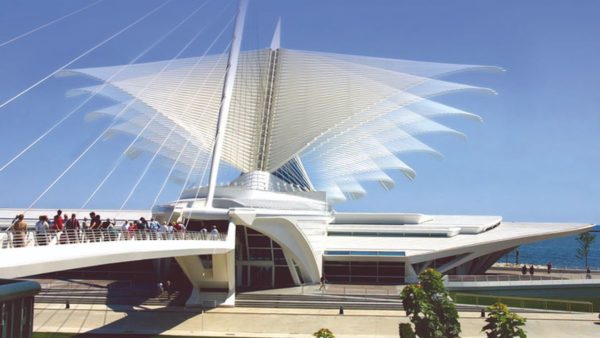
#11 – Art To Honor
In 1988, the first art gallery in Milwaukee was built by Frederick Layton. This art gallery continued to grow and combine with other art institutes, galleries, and centers. In 1957, the two largest art organizations – the Milwaukee Art Institute and Layton Art Gallery – merged to become the Milwaukee Art Center. It was largely due to the Metropolitan Milwaukee War Memorial Corporation, who wanted “To Honor the Dead by Serving the Living” by constructing a large and lovely home for Milwaukee art to dwell in.
#12 – The Milwaukee Art Museum Today
The Milwaukee Art Museum isn’t a regular art museum; it’s an absolute architectural wonder. Appearing to be an enormous manta ray, the wings of the “Calatrava” building actually move! The wings open each morning as the museum opens, and close at night when the museum closes. These wings are known as the Burke Brise Soleil and have the same wingspan as a Boeing 747! Take that, Louvre!
The History of the Major League Brewers Baseball Team
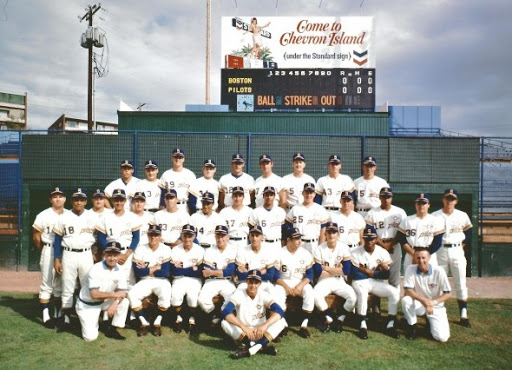
#13 – Bernie Brewer: The Man Behind the Mascot
The official mascot of the Brewers’ is Bernie Brewer, but did you know that this mascot was modeled off one of the team’s most famous fans? Milt Mason sat perched on top of the scoreboard until the attendance hit 40,000. He was up there for over a month! Talk about a stakeout. Thus, the mascot Bernie Brewer was styled in his honor.
#14 – Secret Stadium Sauce
While Secret Stadium Sauce might sound a bit like “mojo,” it’s a literal sauce. The Milwaukee Brewers’ stadium is called Miller Park; it’s the only place in the world to find “Secret Stadium Sauce.” Apparently, it was invented in the 1970s when one vendor ran out of ketchup and had to improvise. Some people say the proof is in the pudding; Brewers’ fans say the secret is in the sauce!
#15 – A Designer’s Eye
The Brewers’ retro logo has been touted as one of baseball’s most well-designed logos as it’s a sort of optical illusion. The mitt actually consists of an “M” and a “B!” Interestingly, their logo used to be the Beer Barrel Man!
The History of the Milwaukee and Harley Davidson
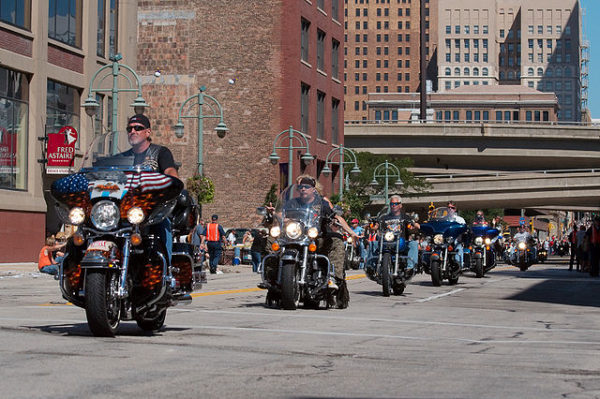
#16 – Humble Harley Beginnings
It was the year 1901 when 21-year-old William Davidson finished his design for a bicycle with a single-cylinder engine. He teamed up with his friend Arthur Davidson, and together they created the business Harley Davidson by building motorcycles inside a shed – a 10 by 15 foot shed on Milwaukee soil right on the Davidson family property. They sure have upgraded since then…
The History of Milwaukee’s Bowling Alley
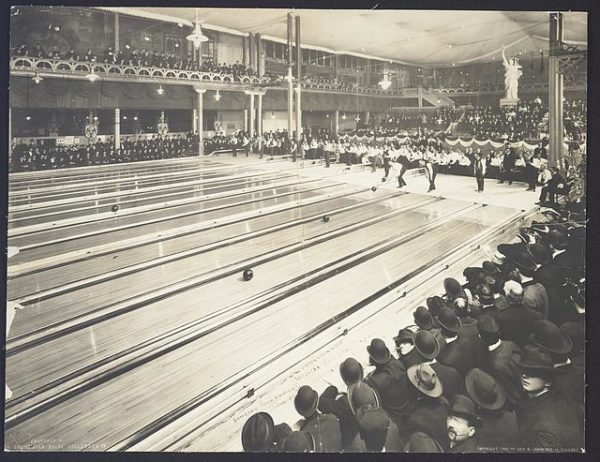
#17 – America’s Oldest Bowling Alley
The oldest bowling alley in America lies in Milwaukee. It’s called the Holler House, and it only has two lanes! It’s not mechanical in the least; there are human “pin-setters” who put your pins up by hand, and scoring is done by hand too. The real highlight of this bowling alley might leave you in a state of shock. I’m talking about an extensive bra collection dangling from the ceiling.
Final Thoughts on the History of Milwaukee
Phew! No skeletons! Just a whole lot of beer and baseball, with some motorcycles thrown in the mix. The history of Milwaukee sure is jam-packed with curiosities and oddities, isn’t it? From the invention of an 80-pound telephone answering machine to the baseball fan who sat atop a scoreboard for a month, there’s more to Milwaukee than meets the eye.
I just wish I could have fit in all the historical oddities, like the fact that the largest collection of antique microphones dwells in Milwaukee, as does a giant “Welcome to Cleveland” sign. Alas, there’s not enough time for everything, but I hope these 17 facts about the history of Milwaukee left you wanting just a morsel more…if only we had some Secret Stadium Sauce to go with it.
***Disclaimer*** Some of the links in this post are affiliate links. This means that if you book your accommodation through the site, One Weird Globe will earn a small commission at no extra cost to you. Your support helps me keep the site going :)
